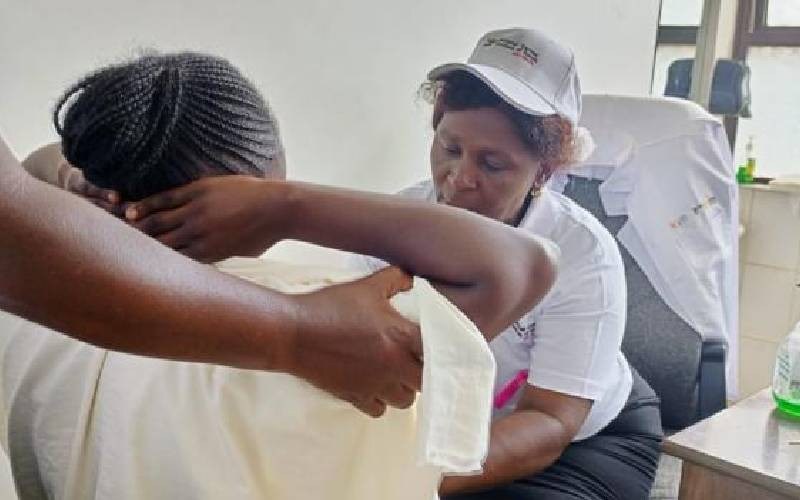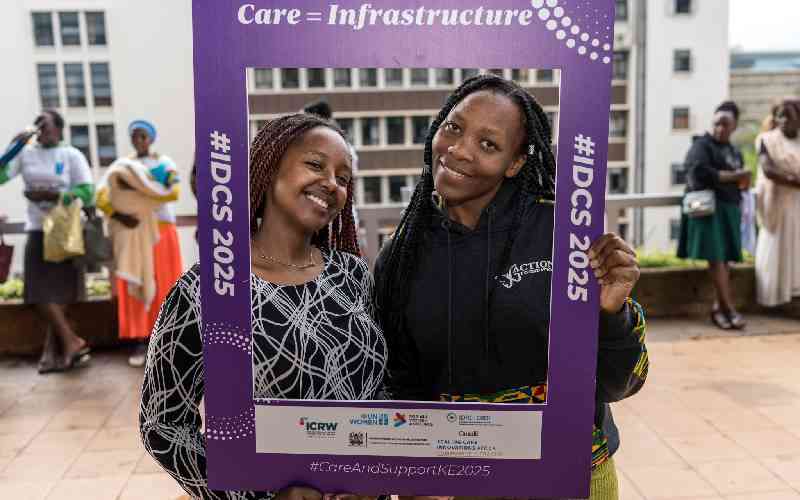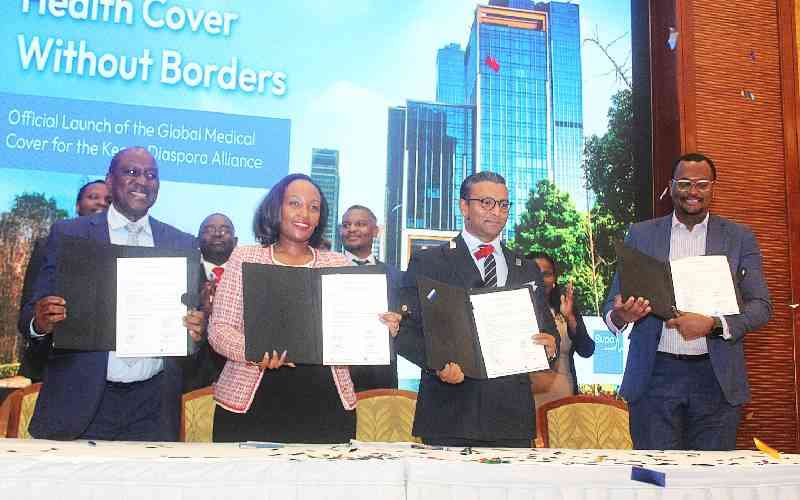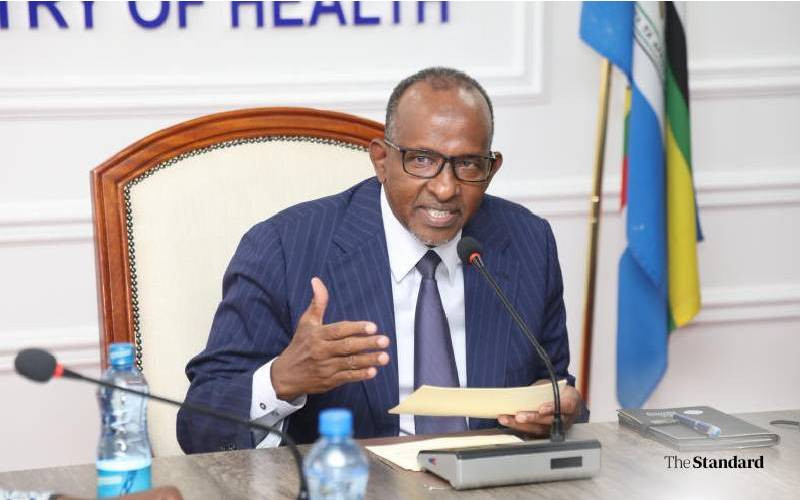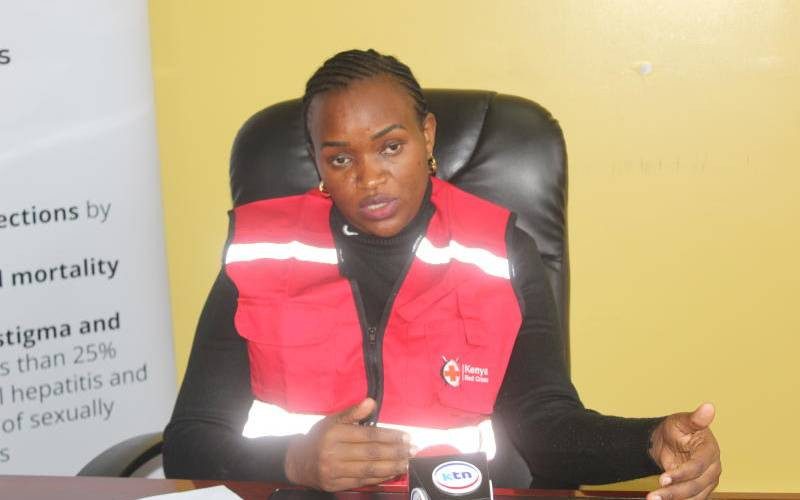
Amid a freeze on foreign aid, the Kenya Red Cross Society — one of the principal recipients of Global Fund support— has intensified initiatives aimed at preventing new HIV infections, especially among mothers and their children.
Among the core interventions are early enrolment into Antenatal Clinic (ANC) and use of mentor mothers. The mentors are women living with HIV who offer peer support, counselling, and follow-up to pregnant women and new mothers.
The humanity urgency is underscored by worrying new data from National Aids and STIs Control Programme (Nascop) and UNAids, showing a rise in mother-to-child HIV transmission.
The data showed increased rate from 7.3 to 9.3 per cent between 2023 and 2024. Rates of infections according to experts and ministry reveal an alarming setback in Kenya’s ongoing efforts to eliminate new HIV infections and Aids-related deaths.
Mentor mothers track HIV pregnant mothers in their communities, offer psychosocial support, deliver antiretroviral therapy (ART), and ensure they do not default on treatment due to distance, poverty, or stigma.
Additionally, the humanitarian organisation encourages early Antenatal (ANC) visit, and has integrated peer-led outreach to help identify, counsel and support pregnant women as early as possible.
“It is worrying that many mothers attend ANC only after six months of pregnancy, which delays early diagnosis and timely interventions,” said Mirriam Ngure, Head of Global Fund Program, at KRCS. “The fight against HIV is far from over. But with the help of empowered mentor mothers and the communities they serve, we are closer to closing the taps of new infections,” said Ngure.
The trends of mother child infection is higher in counties with lower disease burden, for example, Mandera, Wajir, Samburu, West Pokot and Isiolo. Contrary, counties with low burden of HIV are recording low cases of mother transmission for example Homa Bay, Siaya, Kisumu and Migori.
In 2023, Siaya met World Health Organisation’s (WHO) target of below 5 percent, having stood at 4 percent of mother child transmission.
Ngure attributed the cases to low awareness and climate-induced food insecurity. “Drought and economic hardships impact nutrition, which in turn affects treatment outcomes. These challenges call for context-specific interventions,” says Ngure. “In semi-arid and arid counties, food is more important to the population, as compared to ARVs, or HIV treatment”.
Notably, Kenya is grappling with low treatment coverage of HIV among children, with only eight out of 10 babies born with HIV initiated on treatment, equivalent to 75 percent.
Viral suppression in children also remain low, at 66 percent. Kenya is five years shy of eliminating new HIV infections among infants by 2030.
At least 1,326,336 people in Kenya are living with HIV. New HIV infections also increased from 16,000 in 2023 to 19,991 in 2024, while 21,077 people died of Aids-related complications over the period.
Of the deaths reported, 2,685 were children aged between zero and 14 years, while 62,798 of the same age got infected with the virus.
Kenya’s fight against HIV/AIDS was heavily donor supported, more so from the U.S. Government, which significantly improved treatment and prevention of the viral disease. The support has seen an increase in the number of people put on treatment, including preventive measures.
But with a shrink in foreign aid, as a principal recipient of Global Fund HIV grants since 2012, KRCS has taken a lead in coordinating community-centered interventions, working with various sub-recipients to implement life-saving programs targeting key populations.
The goal of the current Global Fund-supported grant is aimed at to reduce new HIV infections by 75 percent.
Achieving this, according to Ngure is only possible through an integrated approach combining prevention, care, and treatment, all anchored at the community level.
Among the prevention strategies championed by KRCS are condom distribution, access to oral and long-acting injectable PrEP, and awareness creation.
Through the “Undetectable = Untransmittable (U=U)” principle, the organisation is working to reduce viral loads, ensuring people living with HIV do not transmit the virus to others. “A lot of our impact comes from engaging the community directly,” Ngure explains.
She added, “We have enhanced access by integrating drop-in centers into existing health facilities to ensure sustainability, reduce stigma, and increase acceptance, especially among marginalised populations.”
Ngure added, “We are also supporting the triple elimination agenda—eliminating HIV, syphilis, and hepatitis transmission from mother to child. This is only possible if women are identified early and followed up throughout their pregnancy journey.”
Additionally, KRCS oversees grant compliance, risk management, and capacity building for sub-recipients.
They also ensure data quality and regular reporting aligned with national and donor expectations.
“We track data from the community level up to county and national platforms,” explains Ngure. “Through supportive supervision and quality assurance, we ensure that what is reported reflects real service delivery and impact.”
Adolescents are also considered in elimination activities. The population, currently reporting higher percentage of new infection, is taken through proven programs that encourage early testing, informed decision-making, and continued engagement with health services.
Further, they are encouraged to have safe sex, and if not, use condom, preventing both HIV, other sexually transmitted diseases and unwanted pregnancies.
 The Standard Group Plc is a multi-media organization with investments in media
platforms spanning newspaper print
operations, television, radio broadcasting, digital and online services. The
Standard Group is recognized as a
leading multi-media house in Kenya with a key influence in matters of national
and international interest.
The Standard Group Plc is a multi-media organization with investments in media
platforms spanning newspaper print
operations, television, radio broadcasting, digital and online services. The
Standard Group is recognized as a
leading multi-media house in Kenya with a key influence in matters of national
and international interest.



